Last updated on May 5th, 2023
Snakes are remarkable creatures, and a very necessary part of ecosystems. They are also one of the most feared animals, despite the fact their control of rodents can be a very effective natural balance to limit disease. However, it’s also important to know that not every snake is the same. Far from it!
There are many different snakes out there and they can vary in some pretty wild and unique ways you might not be aware of.
Interesting facts about snakes
1. What do snakes eat?
Snakes prey on other animals. Small snakes consume frogs, lizards, rodents, worms, snails, birds, and insects. Large snakes can take on young deer, antelope, and other mammals. They open their mouths wide to swallow whole.
2. Which colors are snakes found in?
You can find snakes in shades of green, blue, brown, red, yellow, and black. Snakes with many predators have plain scales to prevent detection. Meanwhile, species that hunt using an ambush strategy have patterns that blend into their surroundings.
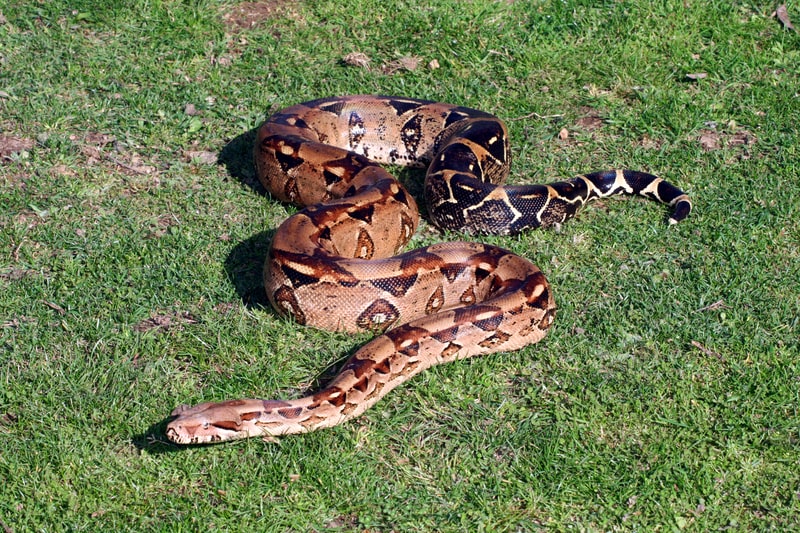
3. How do snakes move?
On rough ground, snakes use lateral undulation to push themselves forward in a wave pattern. On smooth surfaces, they lift and set their twisted body sideways. In tunnels, their back half braces against the walls while the front extends forward. On trees, snakes may glide from branch to branch. When stalking, they use rectilinear locomotion to slowly reach their prey. They lift their belly up, pull forward, and drop down.
4. Where do snakes live?
You can find snakes on land and in water around the world, except for the frigid regions at the poles. People have found snakes living 16,000 feet high on the mountains of the Himalayas and 800 feet under the sea of Australia.
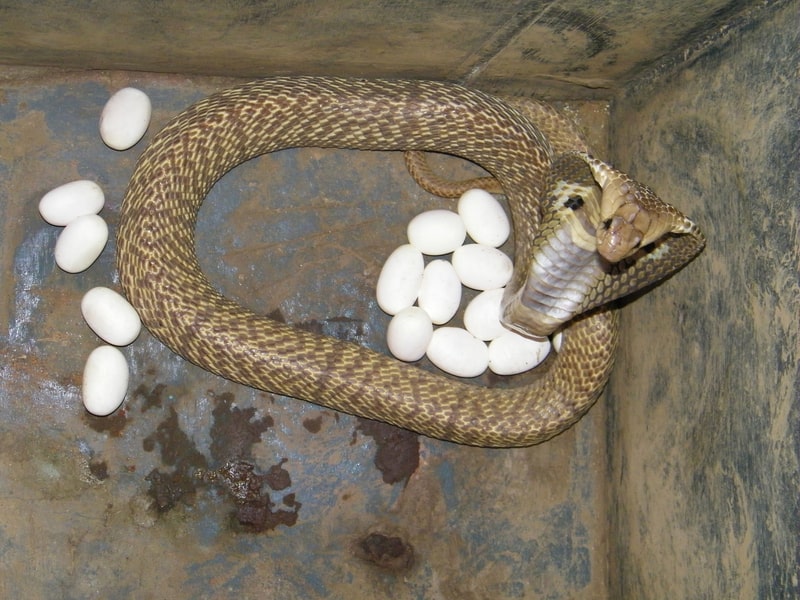
5. How do snakes reproduce?
Solitary snakes will only entertain companions during mating. Males may engage in ritual combat or perform a courtship dance. Most females leave their eggs since young snakes can hunt on instinct soon after hatching. King cobras, pythons, and a few other species are the exceptions. They stay close to the nest to protect their eggs.
6. What is the purpose of scales on a snake’s body?
Scales protect the body like armor. They shield against bites, stings, cuts, and punctures. They also serve as a moisture barrier, retaining precious body fluids. Scales may help with camouflage for safety. Some snakes have rough scales that help them grip slippery prey like fish.
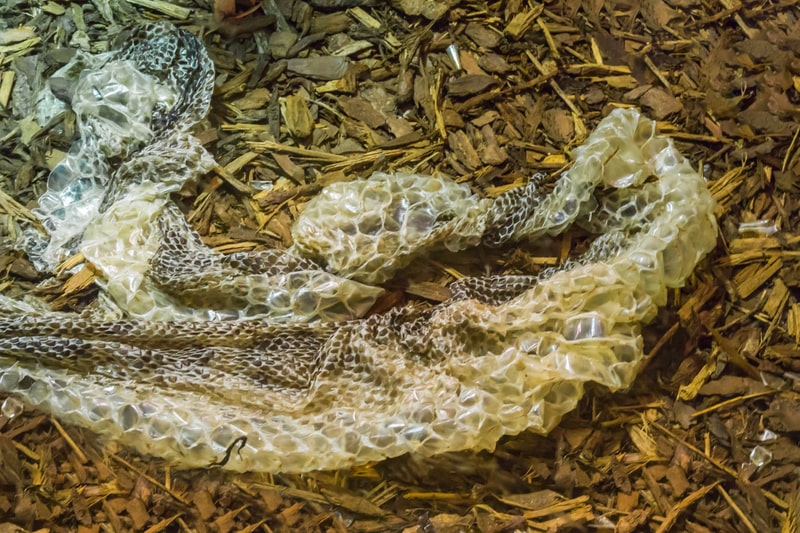
7. Why do snakes shed their skin?
Young snakes shed their skin every two weeks, while adults do it once or twice per year. The complete outer layer is removed in one go, as if taking off an old sock. This process is called ecdysis. It helps them get rid of parasites like ticks and mites for better health. It may also help them grow faster.
8. Why do they attack?
While most snakes are not aggressive, some species, such as the cottonmouth in North America or the Black Mamba in Africa, will attack if they feel threatened.
9. Countries with no snakes
Only four countries/territories in the entire world have no snakes: Iceland, Ireland, Greenland, and New Zealand. Isn’t this an interesting snake fact!
10. How many species of snakes are venomous?
Only about 600 species of snakes are venomous out of the 3,500+ in the world. Among those 600, only a third of them (200) have the ability to kill a normal healthy human being.
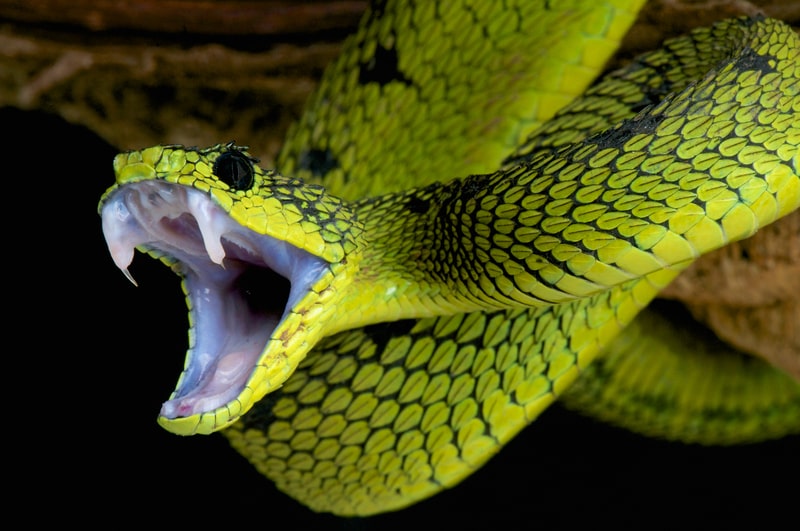
11. How do snakes inject venom?
Venomous snakes have special fangs that they use to inject their venom into their prey. Most have them forward in their mouth, but some have “back fangs” and need to chew to envenomate a bite victim.
12. Why their teeth always point backwards?
Snake teeth are always curved backwards. This is not only to shred food, but to keep any potentially live prey from trying to crawl out.
13. Can a snake kill itself?
Venomous snakes have been recorded as killing themselves due to their own bite.
14. Feared yet interesting!
Snakes are one of the most feared animals in the world, but they are actually very interesting creatures who are generally much more afraid of humans than we are of them!
15. Thousands of species
There are over 3,500 different species of snakes in the world with new species still being discovered! The most recent was discovered May 2022 by two children in Paraguay, and the scientific name given to the new name was Phaloris shawnella in honor of the two children who found it: Shawn and Ella.
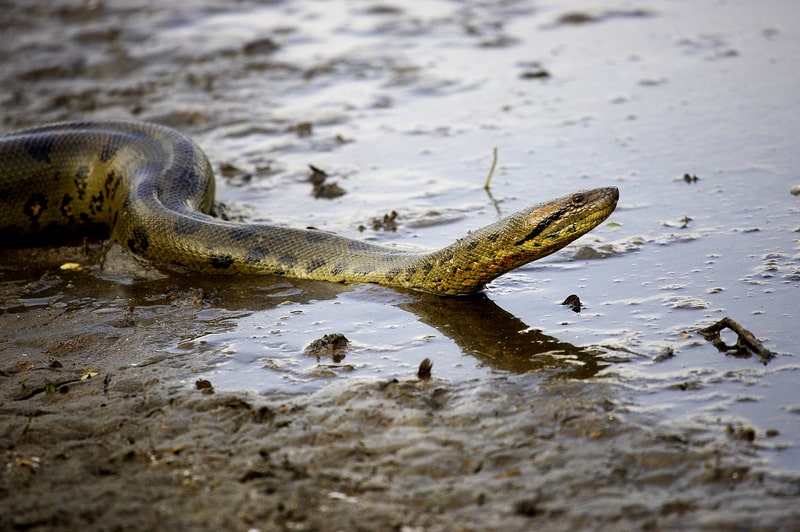
16. Life span of snakes
The average lifespan of a snake is 10-12 years, but some species can live up to 20 years or more.
17. Except Antarctica
Snakes are found on every single continent except for Antarctica.
18. Neither omnivores or herbivores
Snakes are carnivores, which means they only eat other animals. Their diet consists mostly of rodents, such as mice and rats. Though very small snakes often eat insects and very large ones can eat any meat they can kill.
19. Smell vs sight
Snakes use their sense of smell to find their prey, as they do not have eyesight that is very strong. Much of this sense of smell comes from their tongues tasting chemicals in the air.
20. After a heavy meal
Most non-venomous snakes kill their prey by wrapping their bodies around it and squeezing it until it suffocates. Once a snake has eaten its prey, it will usually spend several hours just laying there and digesting it before moving on.
21. Soaking in the sun
In warm weather, snakes will often bask in the sun to raise their body temperature. This is why many are found sunning on rocks, especially as it’s warming up after a cool morning.
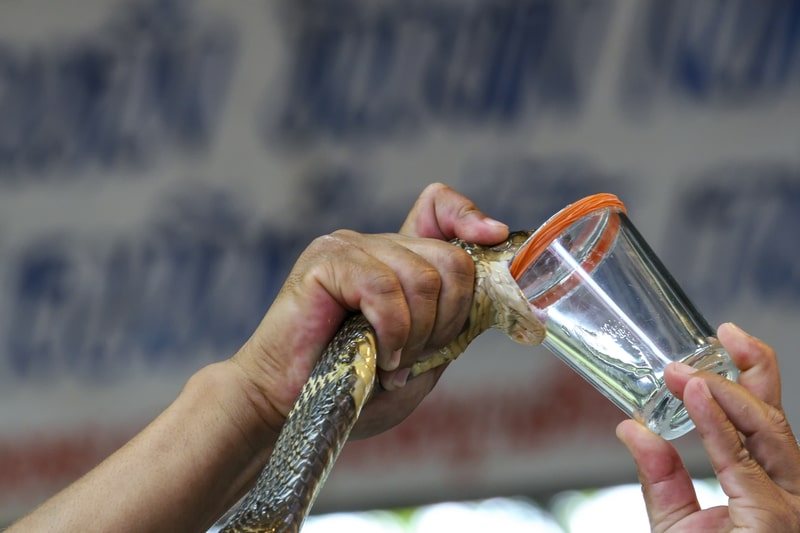
22. Anti-venoms
Snake venom can actually be used for medicinal purposes, such as in the treatment of certain medical conditions, such as pain relief. Most Anti-venoms used to treat a venomous snake bite are actually created from the venom of the snake that did the biting.
23. Venom spitting
Spitting cobras actually have the ability to spit venom out at prey or threatening predators, and can generally spit 4 to 8 feet in distance. The venom can blind a person if it lands in the eyes, and will even blister and damage skin from basic contact.
24. Adaptation to kill
The venom of a snake is adapted to kill its specific prey. For example, the venom of a rattlesnake is designed to kill small mammals, such as rodents.
25. Venom is expensive
The value of snake venom can range from $50 to $5,000 per gram, depending on the type of snake and the demand for that particular type of venom.
26. Neurotoxic vs Cytotoxic
There are two types of venomous snakes: those that have neurotoxic venom and those that have cytotoxic venom. Neurotoxic venomous snakes, such as the cobra, kill their prey by attacking the nervous system while Cytotoxic venomous snakes, such as the viper, kill their prey by attacking the tissues and organs.
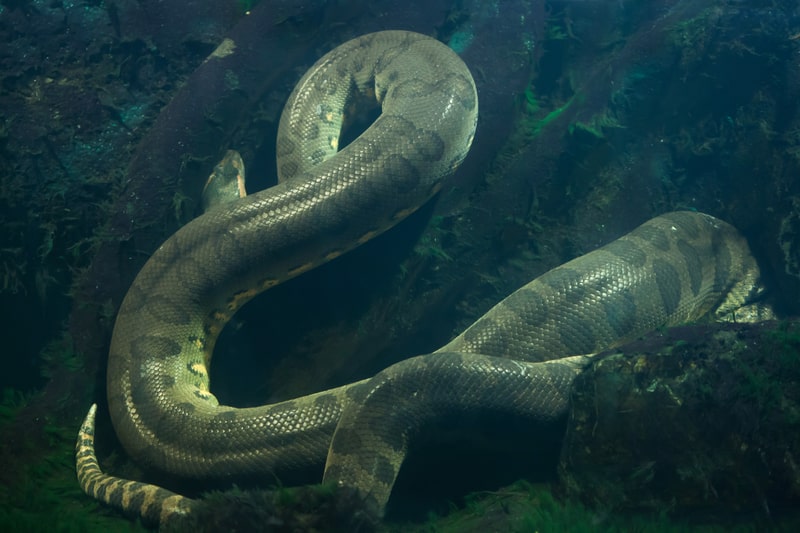
27. The largest snake in the world!
Green Anacondas are the largest snake in the world with some specimens reaching over 30 feet in length and weighing over 550 lbs. The only snake that can compete is the reticulated python which can reach 30 feet in length in optimal conditions, as well, but are rarely as thick. The largest snake ever held in captivity was the reticulated python nicknamed Medusa and reached over 22 feet and weighed well over 350 lbs!
28. How they control their body temperature?
Snakes are ectotherms, meaning they are cold-blooded creatures, which means they rely on the environment to regulate their body temperature. In cold weather, snakes will find a warm place to hide, such as beneath a rock or in a hollow tree.
29. During the night
Most snakes are nocturnal, which means they are most active at night. Since they rely on smell instead of sight to hunt or locate potential threats, night is a good time for them to be most active.
30. Don’t be afraid
Snakes are often feared because of their venom, but only a small percentage of snakes are actually venomous. The far majority are not.

31. A term for fear of snakes
Roughly one-third of all humans have a fear of snake, making it one of the most common phobias in the world. This fear is either referred to as hepetophobia or ophiophobia, and the sheer number of people afraid of snakes makes many scientists believe that was an evolutionary defense system.
32. A species without male snakes
The Brahminy Blind Snake, also known as a flowerpot snake, is the only known species of snake that is composed solely of females. Because of these they do not need males to mate.
33. The King Cobra
The largest venomous snake by length in the world is the King Cobra, which can reach 18 feet in length.
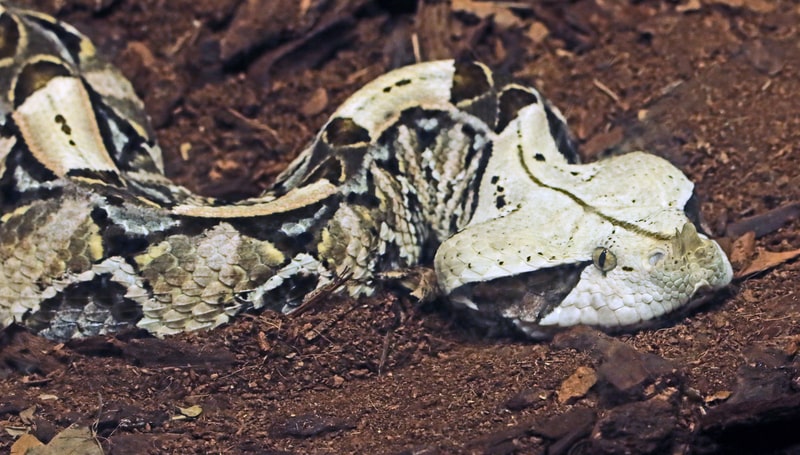
34. The Gaboon Viper
The largest venomous snake by weight is the Gaboon Viper which weighs a stunning 45 lbs and yet this fat viper has the distinction of having one of the fastest strikes in the world.
35. The prehistoric snake
The largest snake we know of that ever existed is the Titanoboa and based on fossil records would grow up to 50 feet long and weigh 2,500 lbs. In other words, the size of some school busses.
36. The smallest snake in the world – the Barbados threadsnake
The smallest snake in the world is the thread snake, which can be as small as 4 inches long. They mostly stay underground looking for ants and termites and can be found on four continents!

37. The Inland Taipan
The most venomous snake in the world is the inland taipan, which is found in Australia. Despite this fact, they are responsible for very few human deaths as people very rarely run into them, so they don’t pose nearly the danger that many other venomous snake species around the world do.
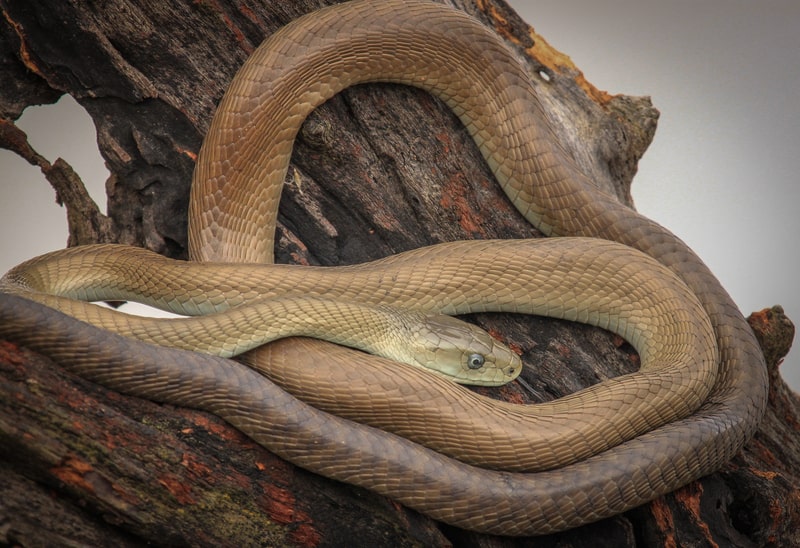
38. The Black Mamba
The deadliest snake in the world by mortality rate is Africa’s feared black mamba, a venomous snake known for having enough venom to take out full-sized cattle and even have a reputation for aggressively chasing people who get too close, which is doubly terrifying when you consider they are also the fastest snake in the world. However, snakes soon tire because of the rapid depletion of their stored energy. The likelihood that a snake will give a persistent chase is small.

39. The Saw-scaled viper
The deadliest venomous snake in the world is believed to be the Saw-scaled viper in India, which might be responsible for more human deaths in human history than all other snakes combined. This is because of the population density of India and the extreme aggressiveness of the Saw-scaled viper which likes to bite early and often. Its venom is only fatal in 10% of untreated cases but since it bites so often, those deaths add up.
40. Number of hatchlings depend on
How many hatchlings a snake will have is directly proportional to how much (and how often) it eats.
41. Life-long growth
A snake never actually stops growing. It will still be growing, albeit most species very slowly, right up until its final year when it dies. This is why even very old snakes still need to shed skin.
42. A little known snake
The iridescent shieldtail might be the hardest snake to find in the entire world! This shy guy is found only in India’s Himalaya Mountains and is bright blue with a bright yellow stripe splitting a black belly. Only three have ever been found, so extremely little is known about them.
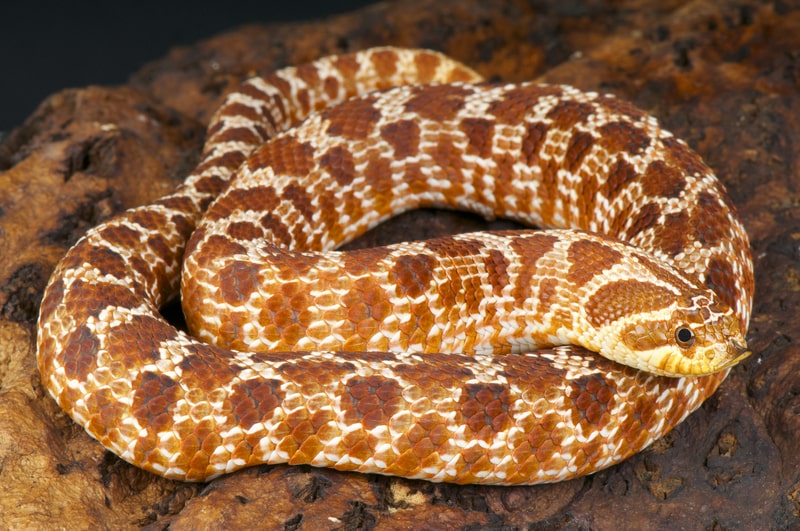
43. The Hognose snake
The Hognose snake is a non-venomous snake that puffs out its neck and head to look like a viper to scare off potential predators. Even when it “strikes” this snake never bites but head butts the potential threat. If that doesn’t work it goes straight to playing dead, which even includes sticking out its tongue and emitting a terrible odor.
44. The Spider-Tailed Viper
The Spider-Tailed Viper is a snake in western Iran that has a tail that literally looks like a fat spider. This acts like a lure as it rests its camouflaged head close by and strikes at any birds who thought they were coming down for a quick and easy meal.
45. The largest snake
The anaconda is the largest snake in the world, with some specimens reaching up to 30 feet in length and is found throughout the Amazon rainforest basin in South America.
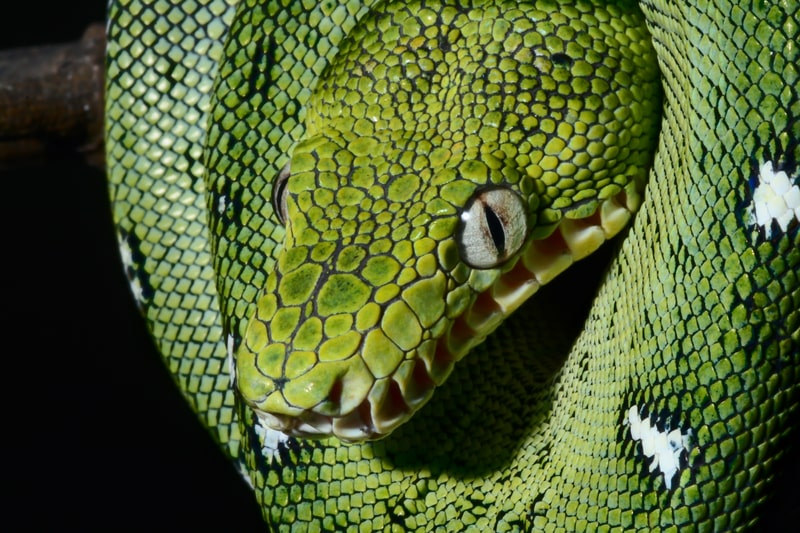
46. Size matters
The anaconda is a non-venomous snake, but it is still incredibly dangerous due to its large size and is one of the few snakes known to have attacked and eaten humans, with others being the Burmese Python or Boa Constrictor.
47. Quick adjustment to swallow large prey
Some snakes can even push the end of its windpipe out of its mouth to breath while swallowing large prey.
48. Tails act as pedal
Sea snakes have paddle-like tails that evolved to help them move in the ocean and allows them to dive over 300 feet.
49. Intelligent and vigilant
King cobras are unusually vigilant parents among snakes, and in addition to being among the most dangerous are also considered some of the most intelligent.
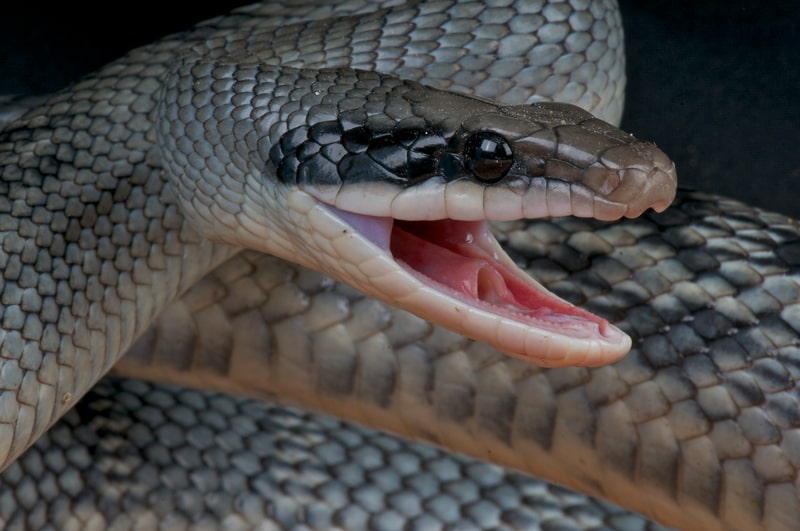
50. Powerful bite
The Gabon viper, found in the rainforests of Africa, is one of the most venomous snakes in the world, and one of the most frightening to those who study it despite its relatively laid back and benign nature. This is due to them having the longest fangs of any snake and the most powerful bite of any snake in the world. The Gabon viper’s venom is so powerful that it can kill a human within minutes if not treated immediately.
51. Hatchlings
Baby snakes are called “hatchlings,” and in most species are 6-12 inches in length and born with their eyes already open. Many have distinctive features, such as the copperhead hatchlings that have a bright yellow tail that fades away after a year or so.
52. Rattle snakes
Rattlesnakes have one of the most distinctive features of any snake with their rattle which is used to warn off potential predators to back off. There are currently 32 different recognized species of rattlesnakes with an additional 83 subspecies.
53. The United States home to the most species
Rattlesnakes are found in both North and South America, with the United States home to the most species, and likely the largest number, of rattlesnakes in the world.
. . . continue reading on the next page
